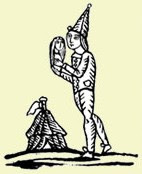
Steaming through this Literary Theory book that I found unread at the beginning of the year, it is time for the next two chapters.
We covered Awakenings and Sex Novels in September. We now move on to chapters 14 and 15...
Chapter 14 - Disgust
While sex was being used to sell books, feelings of disgust were also being used in literature of the day to provoke reaction in the reader, particularly in the popular genre of detective stories. Disgust is an involuntary reaction, complete and spontaneous, and often influenced by cultural parameters. Different cultures find different things disgusting.
A good example is the description of an open wound on the drivers leg as he transports Tess and Angel to their wedding in Tess of the d'Urbervilles by Thomas Hardy. It is deliberately placed by the author, especially as Tess and Angel cannot see it, but we as readers are made to think on it as something out of place. We instantly react to it, and Hardy clearly uses it as a literary device.
Disgust was also used to distinguish class, with lowly work having its own sights and smells giving rise to reaction, and a certain elevation of feeling in the higher classes. Revulsion can also signify change of character for the worst, or as a reaction by another character. We cannot control our feelings of disgust and this gave authors a 'point of entry into the subconscious'. (p217).
Reactions of disgust come into their own in detective novels, describing violence, death or bad character. Death was central to these novels instead of sex, and the physical disgust of a corpse is mirrored by the moral disgust of a murder, and these are powerful emotions to use. Murders are messy, hinting at violence, inciting horror and also fascination. Corpses are dirty and the detective has to sift through the dirt to solve the murder. The detective, in contrast, like Sherlock Holmes, is emotionally unattached, clinically precise and very British. The epitome of deduction and control, and therefore the antithesis of the chaos of crime.
Chapter 15 - Henry James's Odd Women
Henry James wanted to expand his literary prowess by attempting to write from the point of view of characters most unlike himself. So during 1896 and 1899 he wrote a series of novels from a womans viewpoint.
An obvious example of these novels is The Turn of the Screw, a ghost story provoking horror and revulsion, and told through the point of view of the governess employed to take charge of two children in a seemingly haunted house.
There are arguments that this is not a ghost story, but one of hysteria and sexual repression, but James' own notebooks concentrate on the feeling of evil and corruption from across a divide. The devil is duplicitous and the 'two devils' in James' novel replicate this. Also there is the repetition of possession as the children become the medium for the two ghosts. Horror can be connected to disgust and James was clearly intrigued by this.
In The Turn of the Screw and also What Maisie Knew both used social and sexual vulgarity, of 'classes mingling promiscuously' (p241) to evoke feelings of disgust. The women in these novels are vulnerable because they stand at the gate through which vulgarity pours. Their strength in this position does not count. Other than their refusal of desire and revulsion they are denied their own identity. This makes them unique in the fiction of the period.
Contemporary works that illustrate the above points include...
Tess of the d'Urbervilles by Thomas Hardy
Ulysses by James Joyce
The Sherlock Holmes novels of Sir Arthur Conan Doyle
The Turn of the Screw by Henry James
What Maisie Knew by Henry James
The next two chapters will be covered in November.















No comments:
Post a Comment